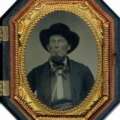Dennis Cassinelli’s latest online article is titled Timber for the Comstock, and it covers the history of logging and timbering in Western Nevada in the 1800s. Virginia City gobbled up huge amounts of wood, both to build the buildings above ground, and to shore up the mines underground. As the riches of the Comstock were realized and increasing numbers of people swarmed the slopes of Mount Davidson, the lumber needs grew exponentially. Early miners were able to get by with cutting down the few native trees that grew on the Comstock, and using them to build simple shacks. But by the time the rush began all those trees had been wiped out, prompting the pioneers to look to the endless forests of the Sierra Nevada.
This brought up the question, though, of how to get the trees from the mountains to Virginia City. At first the loggers used the one natural tool they had been given, the Carson River. Trees were felled along the banks of the river in Alpine County, and floated all the way down to Empire City, where Dutch Nick built a mill to cut the logs into lumber. Other mills along the river soon followed. The wood then had to be hauled up the hill to Virginia City by wagon.
The cost and hassle of hauling the wood with large teams of oxen soon led to the first upgrade in the process; a railroad was built between Carson and Virginia, specifically for the purpose of hauling wood up and ore down, putting the wagons and teamsters out of business. The wood drives on the river soon became a thing of the past too, as most of the trees along the banks of the river had been cut down. So then they started cutting the trees at Lake Tahoe, and sending the logs rocketing downhill in a “V” flume. The largest of these operations was set up by Duane Bliss at Spooner Summit, with the flume following the present-day Hwy 50 down the hill and into Carson City. There the logs would be picked up by train to finish their journey.
By the end of the 19th century, nearly all the trees at Lake Tahoe had been chopped down. Which was fine, because Virginia City had run out of gold and silver so there was no more demand for lumber like in the old days. The mills were silenced and the flumes dismantled, and Tahoe’s forests were left to regrow. A hundred years later these second-growth forests are overgrown and unhealthy, and a constant fire hazard. A testament to why clearcutting is a bad idea.
It’s been said that “the Comstock lode was the tomb of the forests of Tahoe.” Hundreds of millions of board feet of lumber went into the ground, never to be seen again. For more, you can read Dennis’ article, as well as this piece by Julie Stone.


